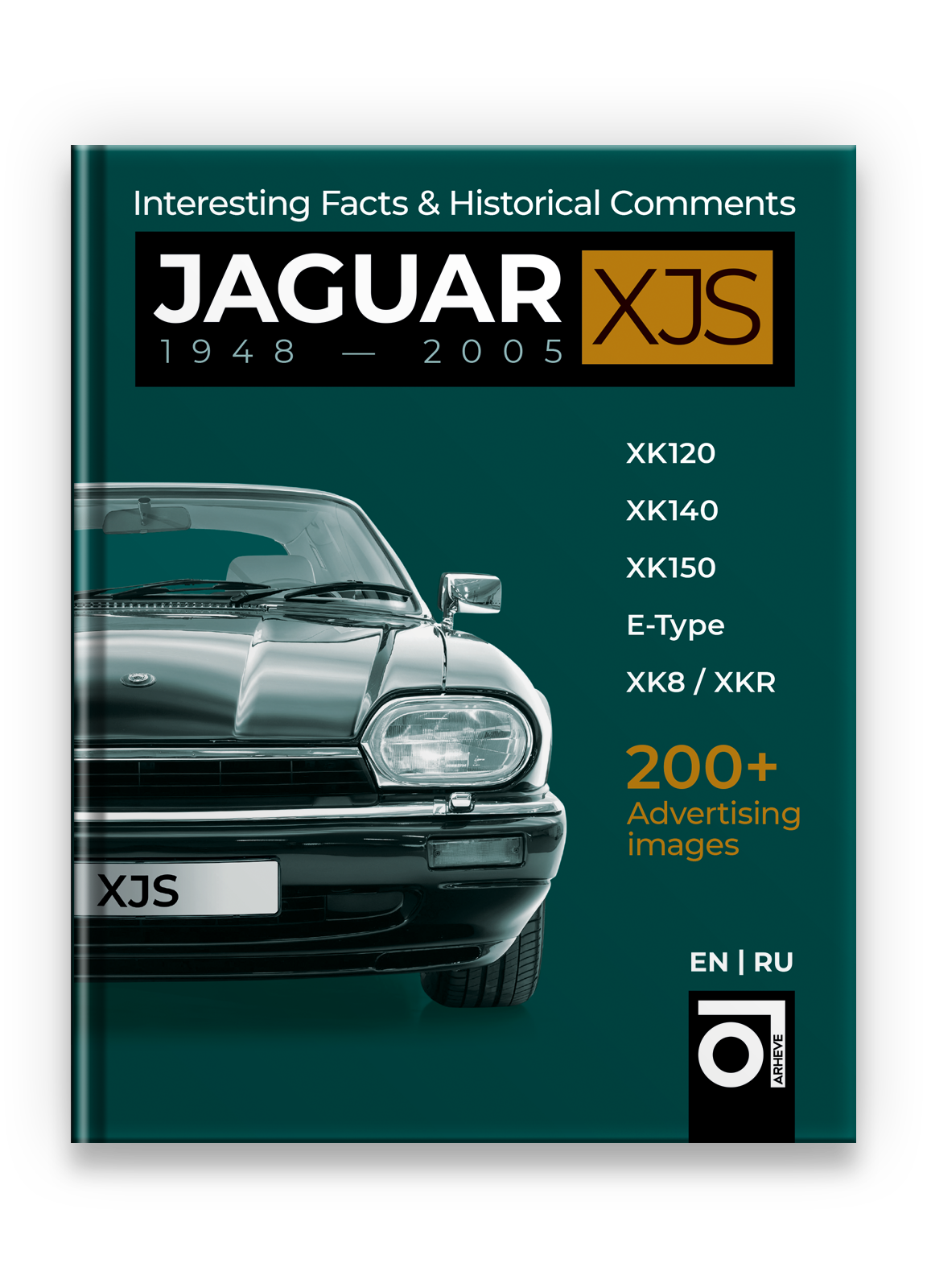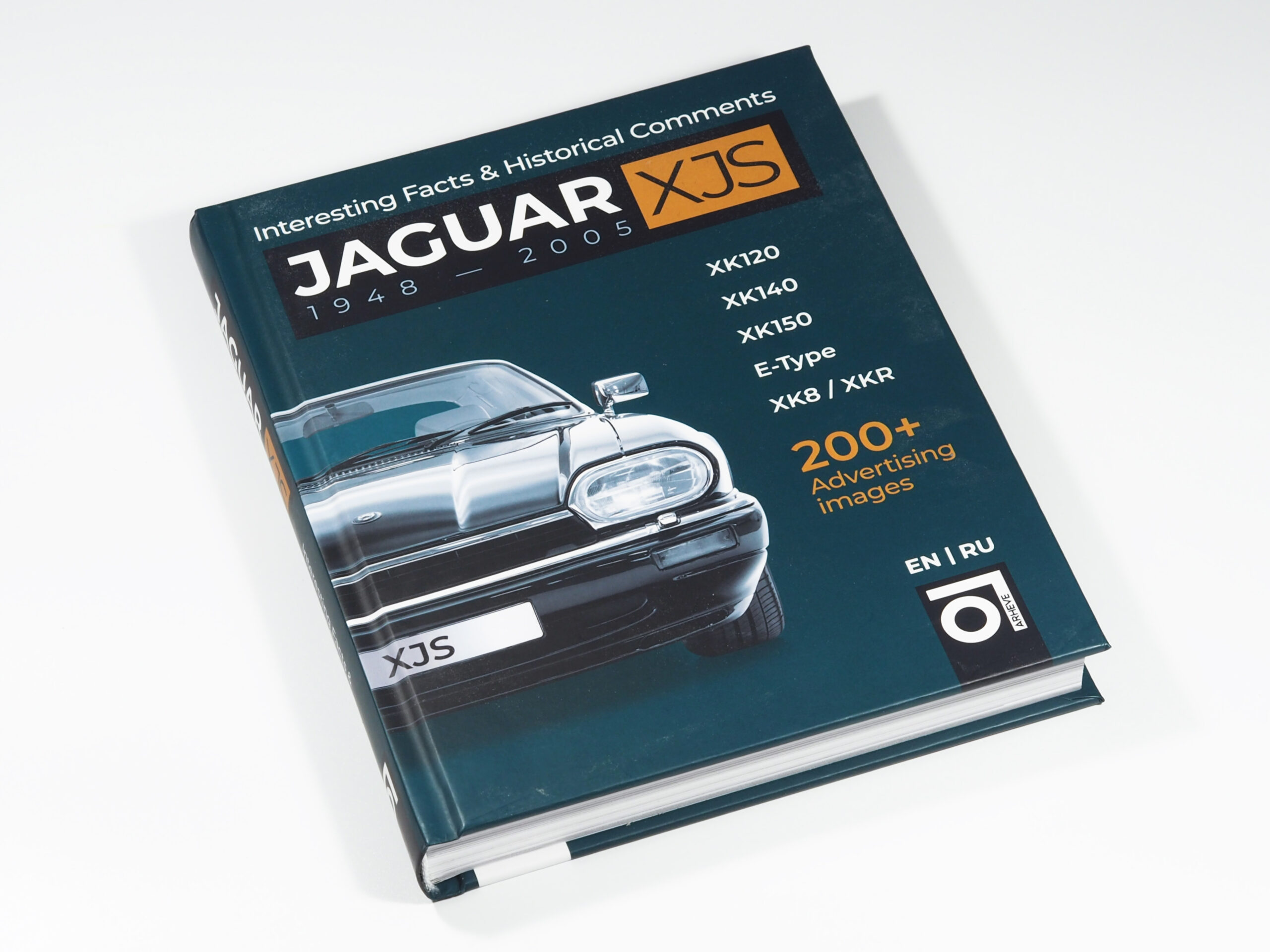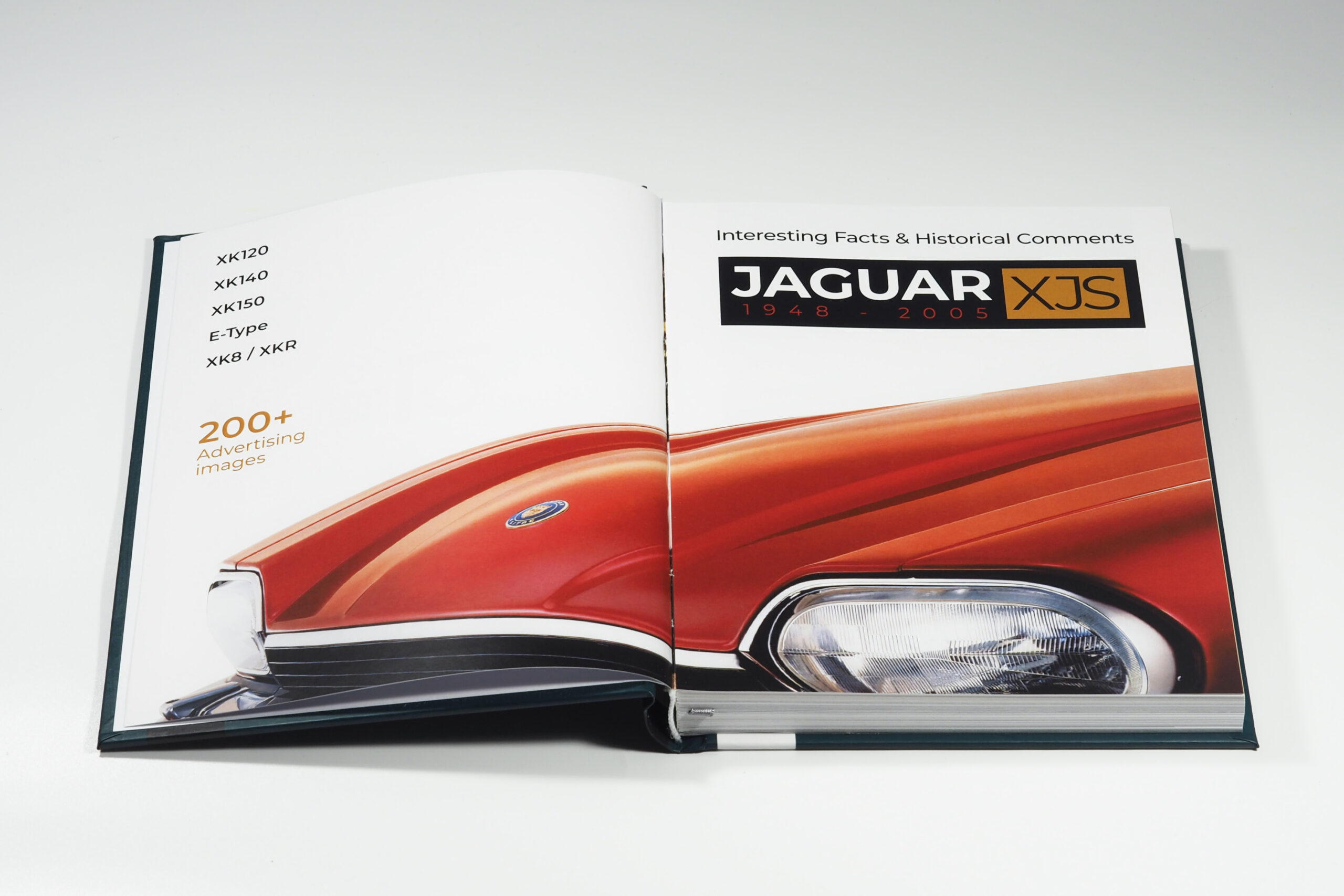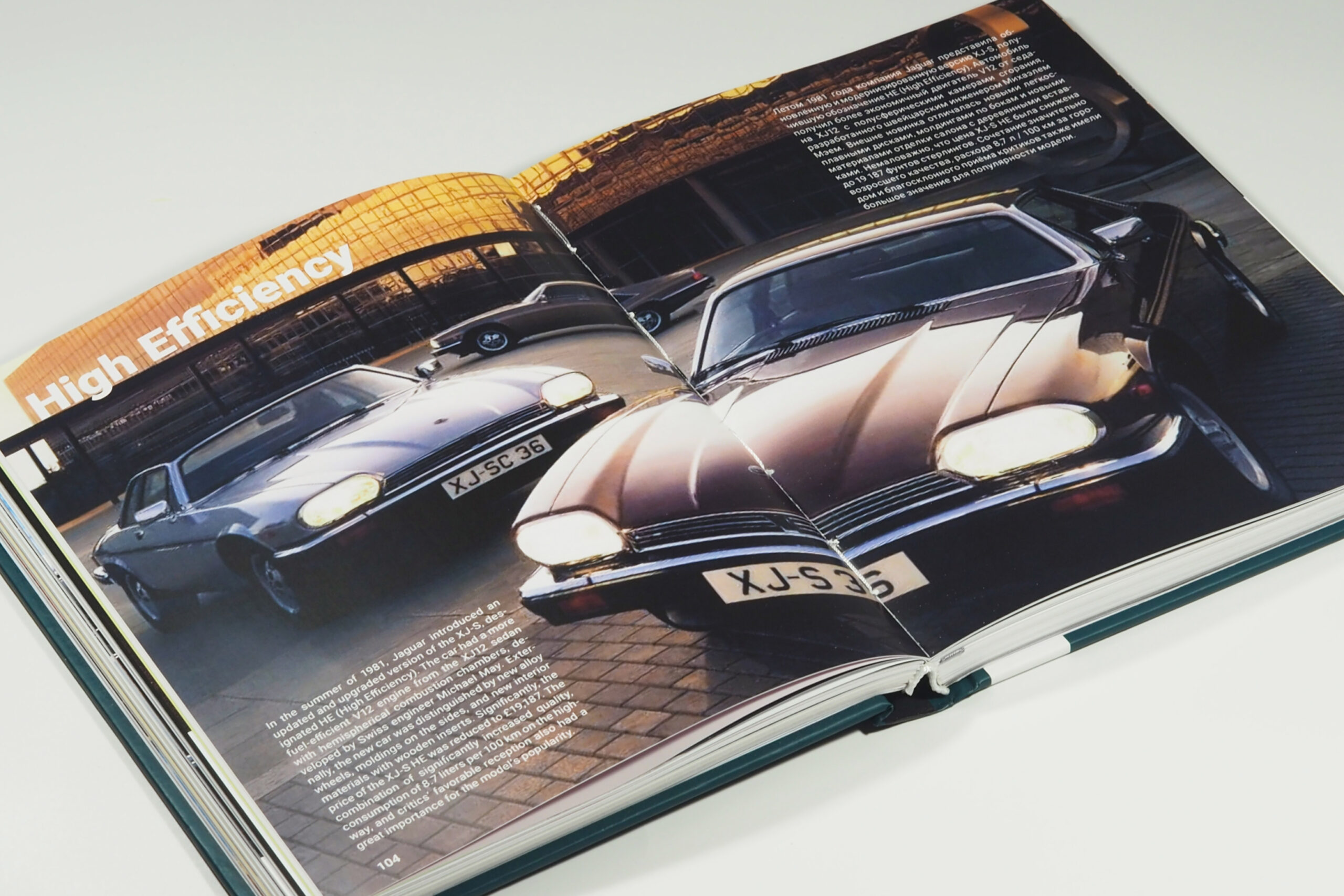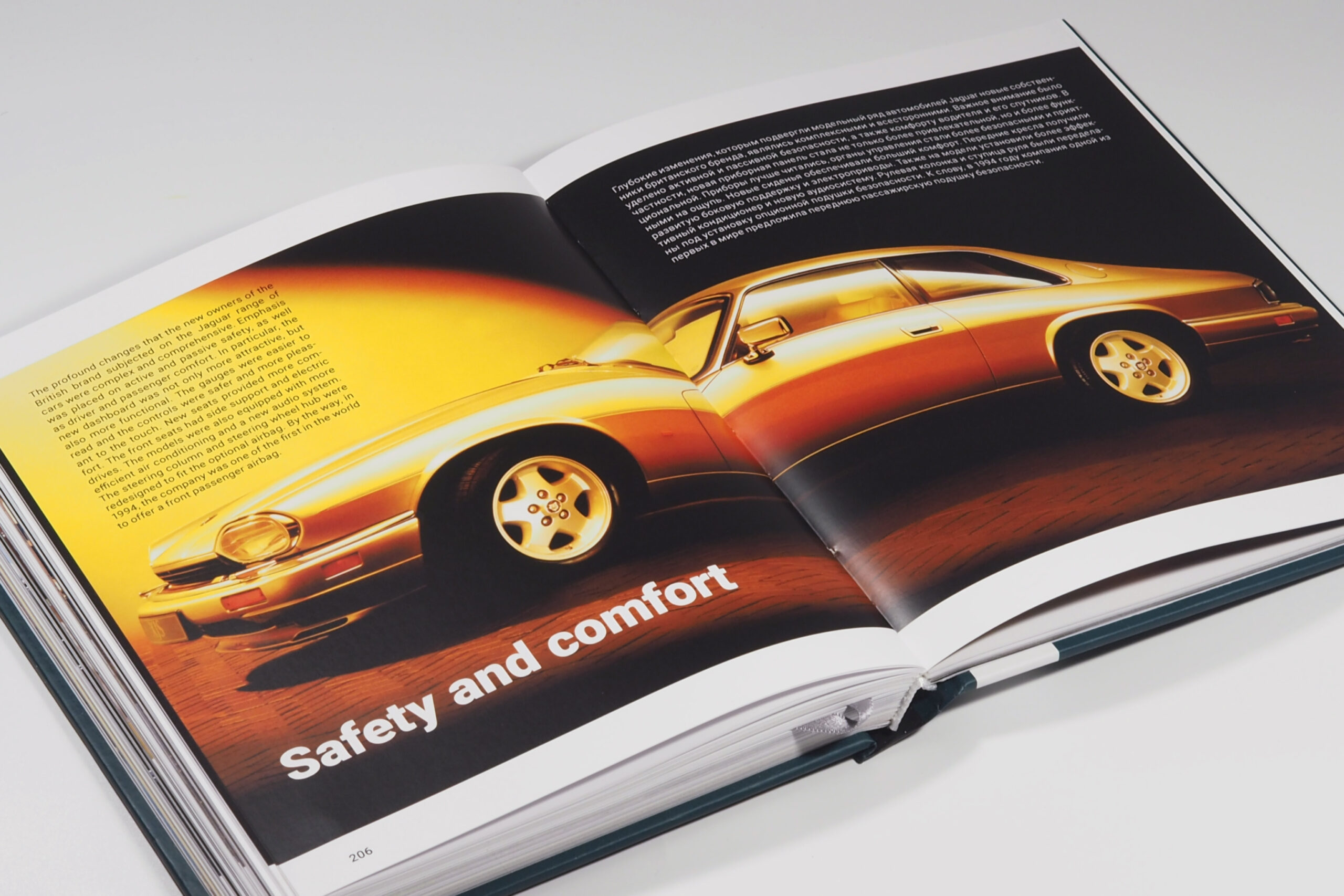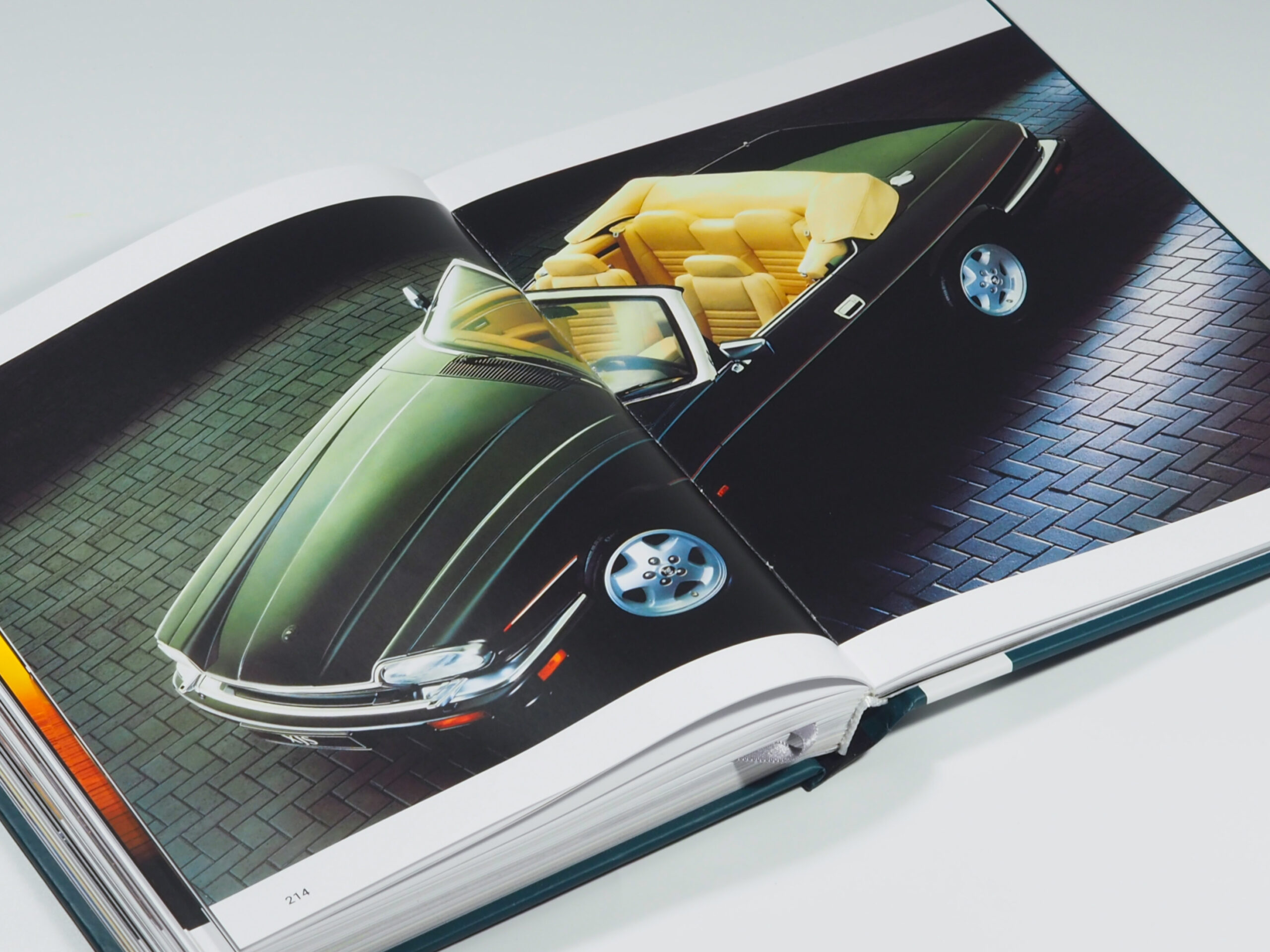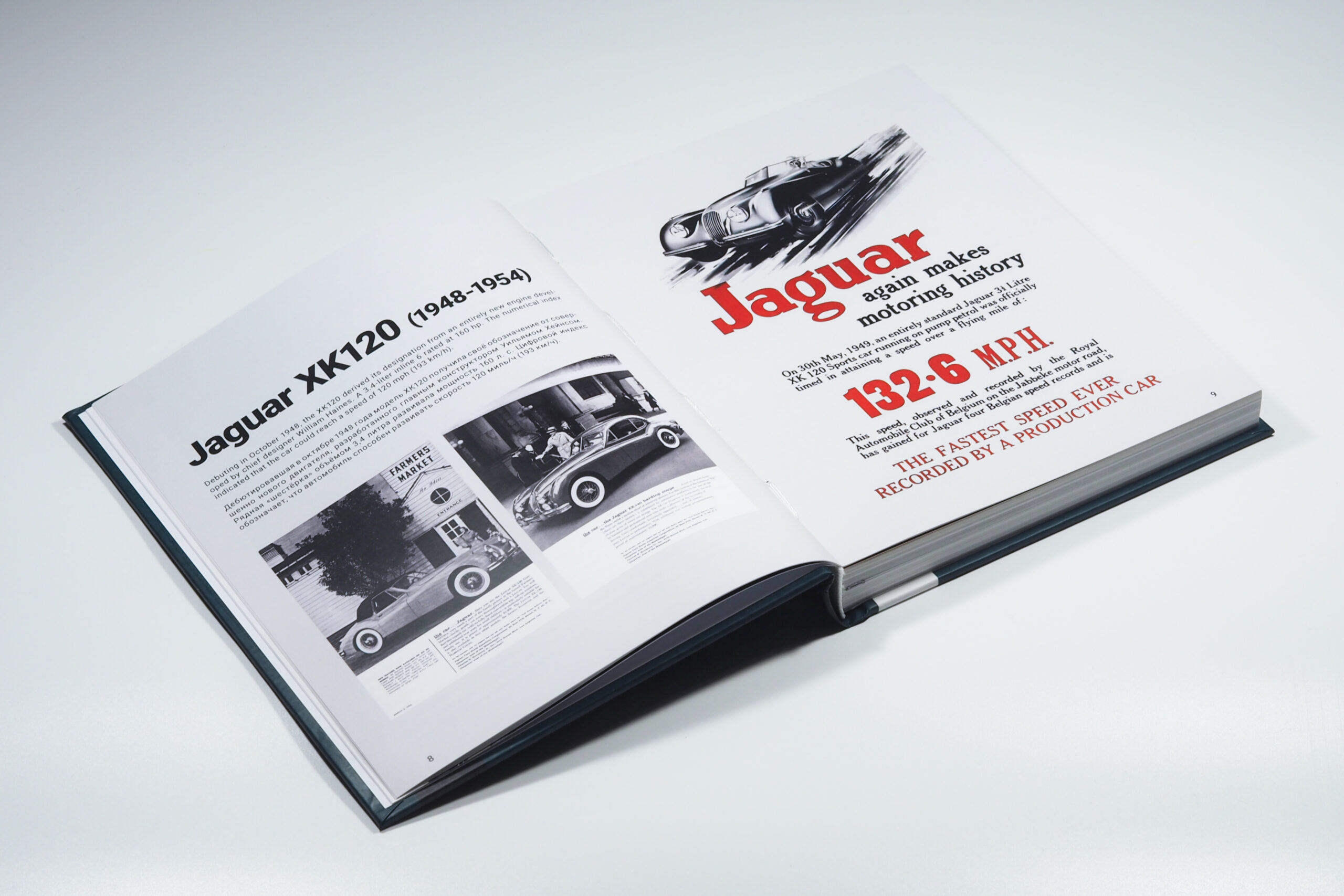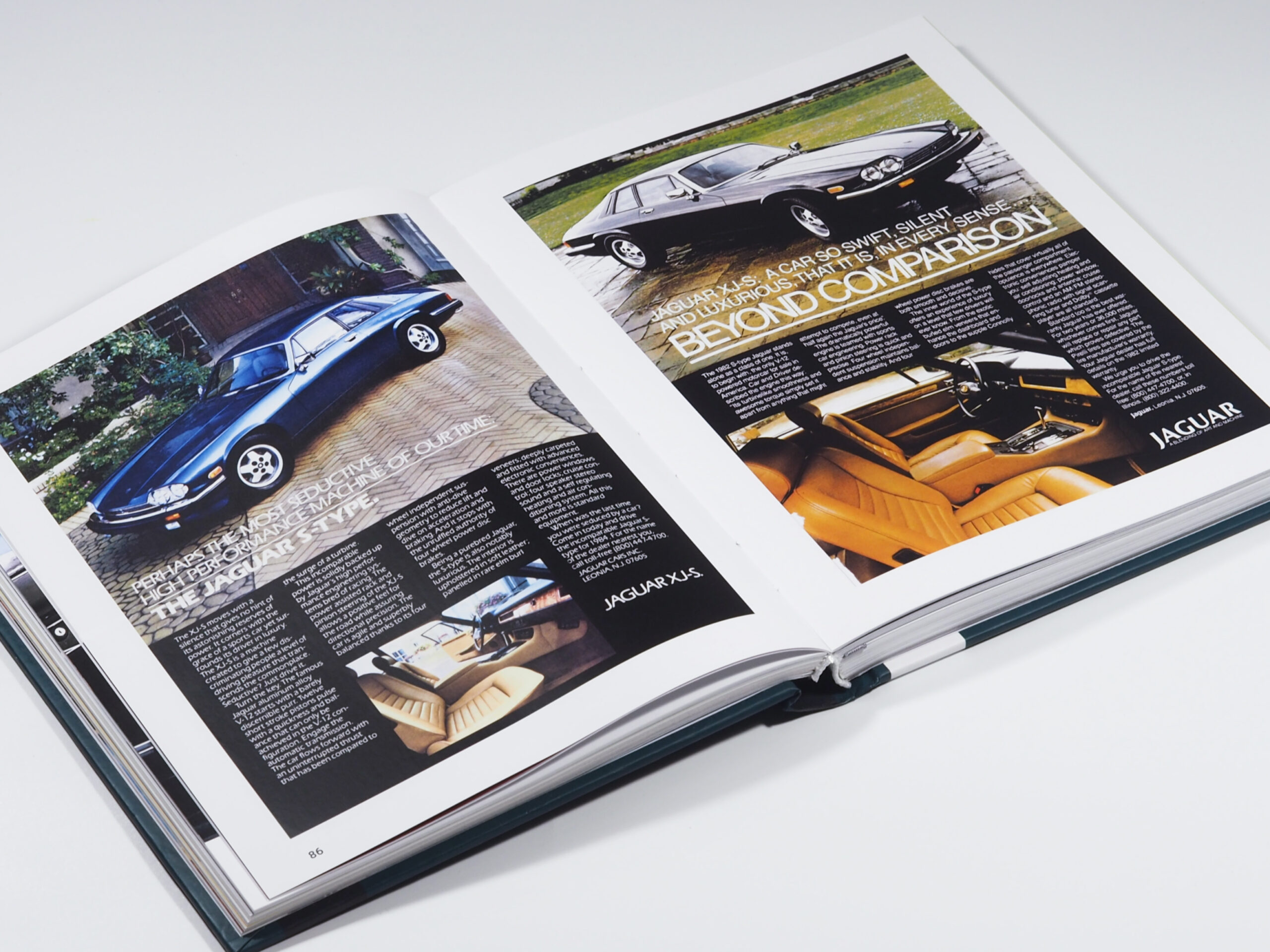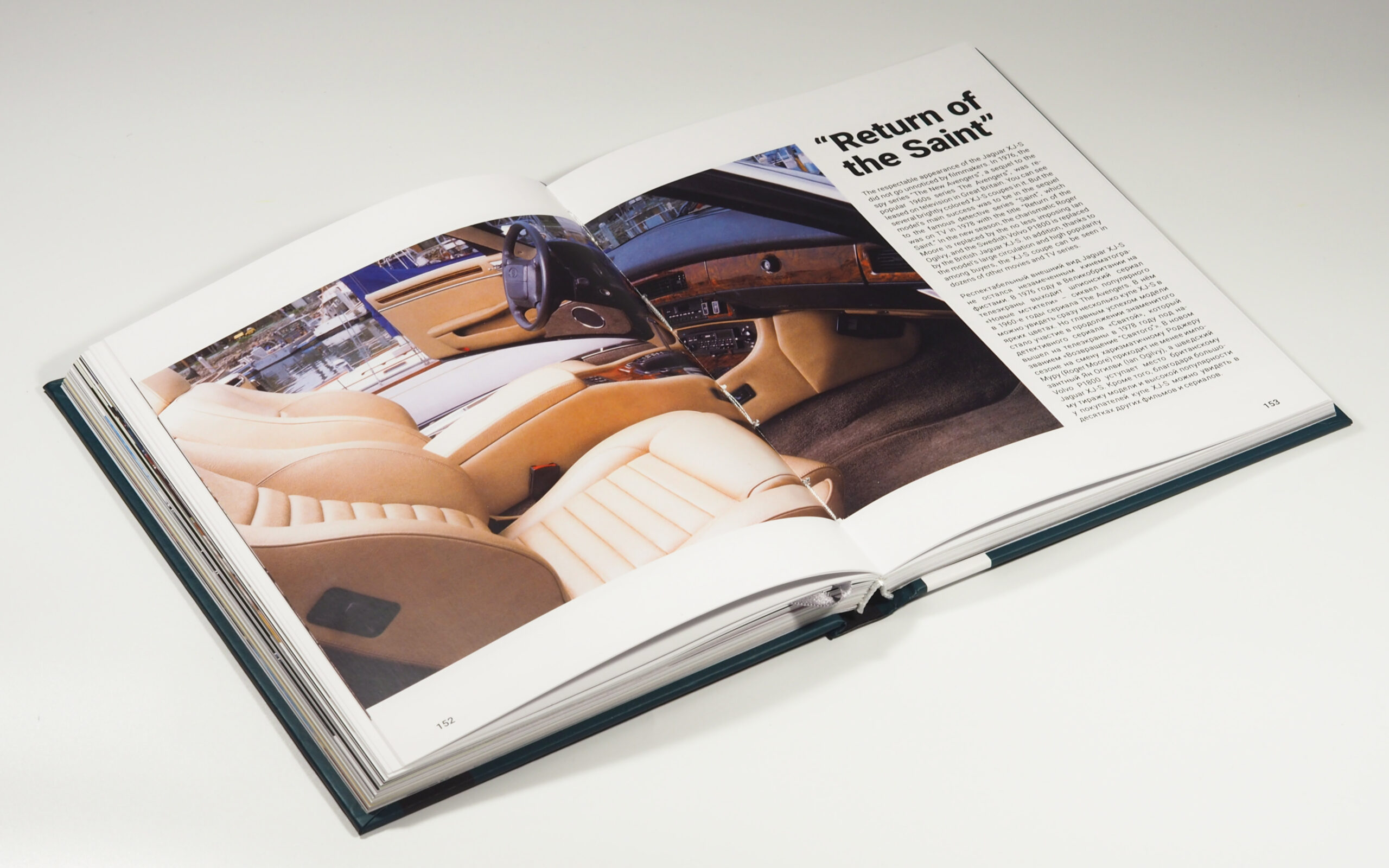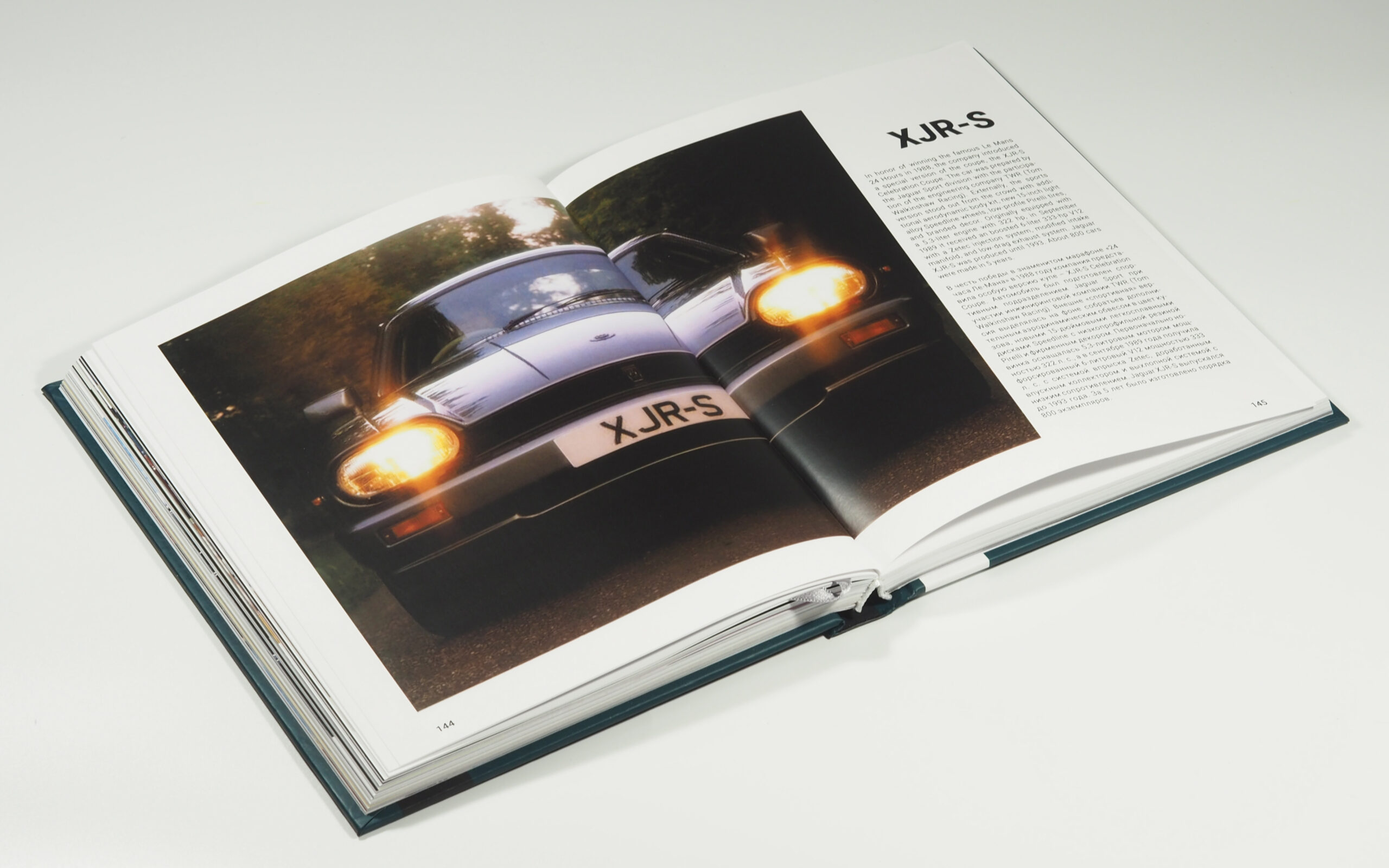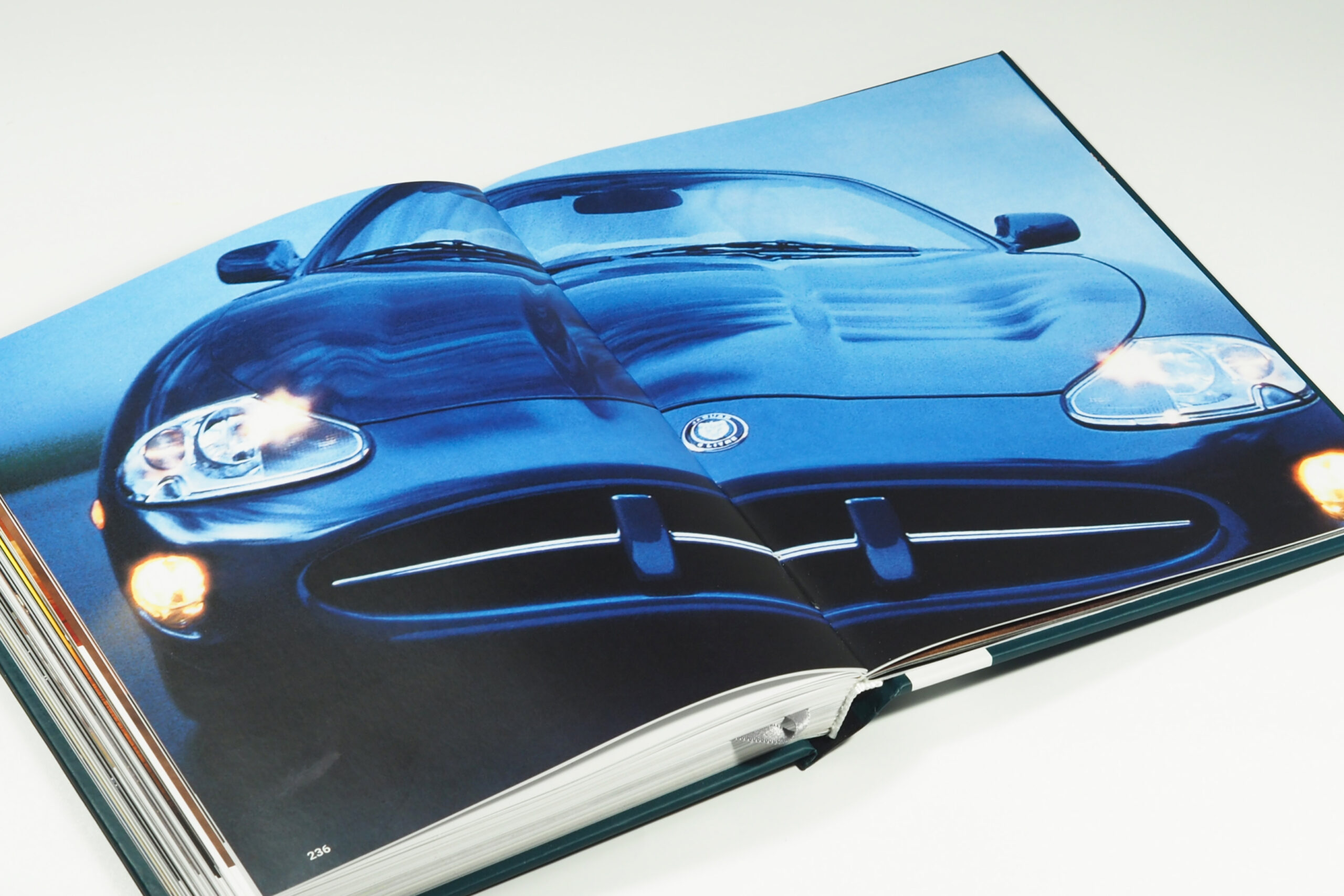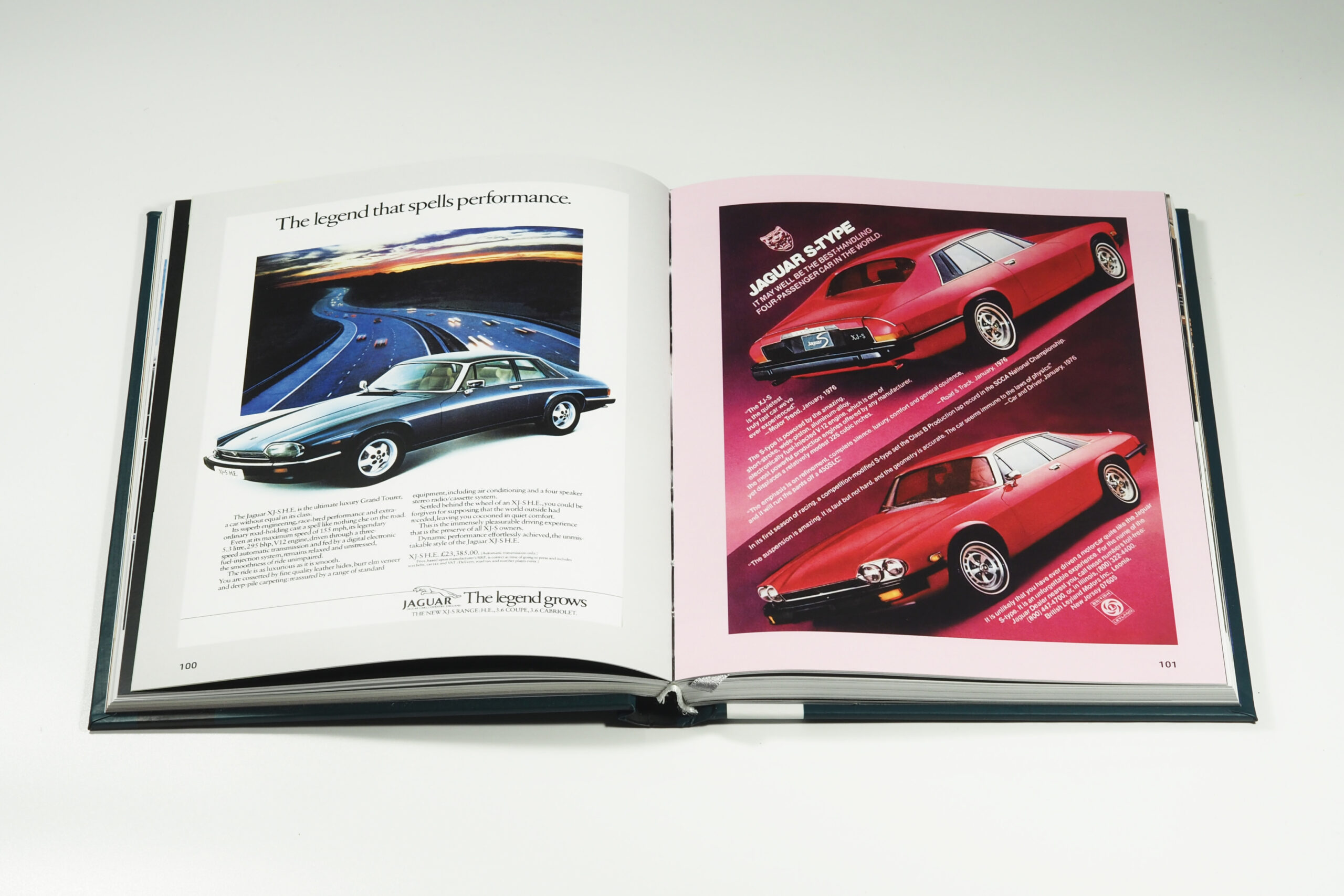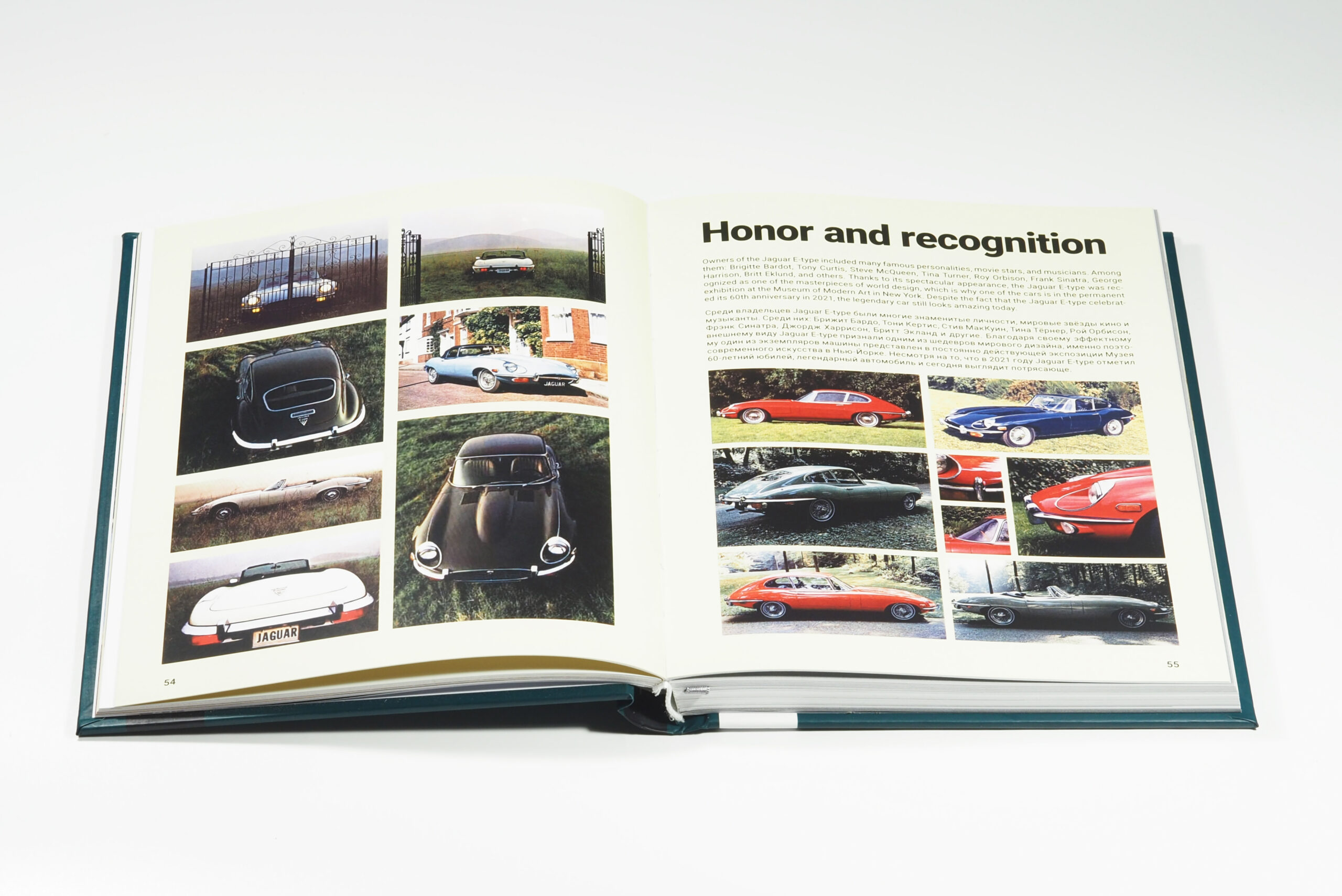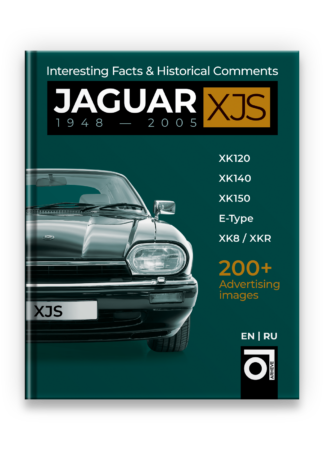Описание
Jaguar XJS Hardcover book (fragment of the text)
The British company Jaguar celebrated its 100th anniversary in 2022. The brand’s cars have always been distinguished by their innovative construction and elegant design.
For example, the Jaguar E-type is rightfully considered one of the most beautiful cars in the world and holds a worthy place in the permanent exhibition of the New York Museum of Modern Art.
Jaguar owes its appearance to a happy meeting in 1922 between two young British gentlemen, William Lyons and William Walmsley. Both were big motorcycle enthusiasts, which predetermined the way they would develop a business together.
Founded in September 1922, the Swallow Sidecar Company began by producing elegant wooden- frame motorcycle sidecars. The streamlined shape of the sidecars resembled the body of a swallow, hence the company name of Swallow.
Soon the companions decided to try the automotive field and signed an agreement with Austin to manufacture bodies for a model popular at that time, the Austin 7. In 1927, two new models appeared in the world, with open and closed bodies.
Despite the fact that the Swallow Sidecar body options were more expensive than the standard Austin 7, their pleasing design quickly attracted not only new buyers to the company’s products, but also new companies: Fiat, Standard, Swift, and Wolseley.
To meet the growing demand, the company moved to Coventry, a major industrial center with well-developed infrastructure. The next important step for the company’s development was signing an agreement to produce a larger model, the Standard-Swallow sedan.
In 1931, collaboration with Standard was marked by the appearance of the SS1 and SS2 models. The new products gave a powerful impetus to strengthen the brand’s image.
In 1934, William Walmsley left the company, which allowed Lyons to intensify his promising projects and ideas in automotive design. A short time later, William Haynes and Harry Weslake joined the team.
The first was responsible for developing a new chassis, the second for creating a modern engine, and Lyons was able to concentrate on the body design. The result of this trio’s work was the SS Jaguar 2.5.
The strength and grace of the jaguar could not be better characterized by the beauty and technical characteristics of the new vehicle.
An automobile with the figure of a leaping jaguar on the hood was presented to the public on September 21, 1935, in London. The car had a 2.7-liter 6-cylinder engine with 102 hp.
Two versions of the 4-seat body were prepared for the new car, a sedan and a cabriolet. Later, the range was expanded with the stylish 2-seat roadster SS Jaguar 100, which quickly gained fame on the racetrack.
That’s where the history of the company’s legendary sports cars began. In 1938, the roadster received a new 3.5-liter 125-hp engine, allowing the car to reach a speed of 160 km/h, which was an excellent indicator for its time.
During World War II, the factory in Coventry switched to war production. Despite the destruction caused by German bombing, the company was able to quickly rebuild production facilities after the end of the war.
At a meeting in March 1945, the shareholders decided to rename the company Jaguar Cars Limited. From then on, the cars were not called SS Jaguar, but simply Jaguar. In autumn, production resumed of sedans with 1.8-liter 4-cylinder engines from Standard, as well as 2.7- and 3.5-liter versions with 6-cylinder engines of its own design.
At the same time, the company was working on new models, which made their debut at the London auto show in autumn 1948. The company exhibited the Jaguar Mark V with sedan and convertible bodies, but the real commotion was caused by the stylish XK120 roadster, which started a line of several generations of the British brand’s sports cars.
Read the continuation of Jaguar XJS story in the book.
Other books about history of Jaguar:
